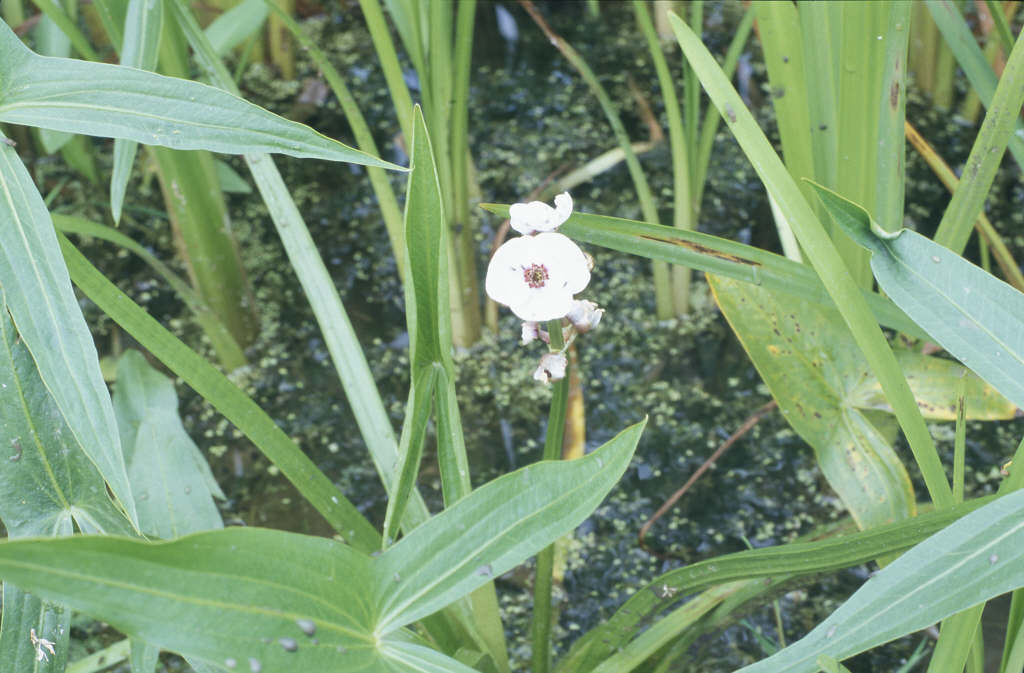Sagittaria latifolia
wapato
A marginal aquatic perennial with usually arrow-shaped leaves, to 30cm in length, and racemes of whorled white flowers, 4cm across, in summer
Size
Ultimate height
0.5–1 metresTime to ultimate height
5–10 yearsUltimate spread
0.1–0.5 metresGrowing conditions
Moisture
Poorly–drainedpH
Acid, Alkaline, NeutralColour & scent
| Stem | Flower | Foliage | Fruit | |
| Spring | Green | |||
|---|---|---|---|---|
| Summer | White | Green | ||
| Autumn | ||||
| Winter |
Position
- Full sun
Aspect
South–facing or West–facing
Exposure
Exposed or Sheltered Hardiness
H6Botanical details
- Family
- Alismataceae
- Native to GB / Ireland
- No
- Foliage
- Deciduous
- Habit
- Clump forming
- Genus
Sagittaria can be marginal or submerged aquatic, tuberous perennials or annuals, with linear, lance-shaped or arrow-shaped leaves and panicles of 3-petalled white flowers in summer
- Name status
Correct
- Plant range
- S Canada to W South America
How to grow
Cultivation
This plant is listed on Schedule 9 of the UK Wildlife & Countryside Act as an invasive non-native species. Although not banned from sale, it is an offence to plant or cause these to grow in the wild IN ENGLAND AND WALES. Gardeners possessing them should undertake measures to control them. See RHS advice on invasive non-native species for further information
Propagation
Please see cultivation notes
Suggested planting locations and garden types
Pests
May be susceptible to water lily aphids
Diseases
Generally disease-free
Get involved
The Royal Horticultural Society is the UK’s leading gardening charity. We aim to enrich everyone’s life through plants, and make the UK a greener and more beautiful place.
